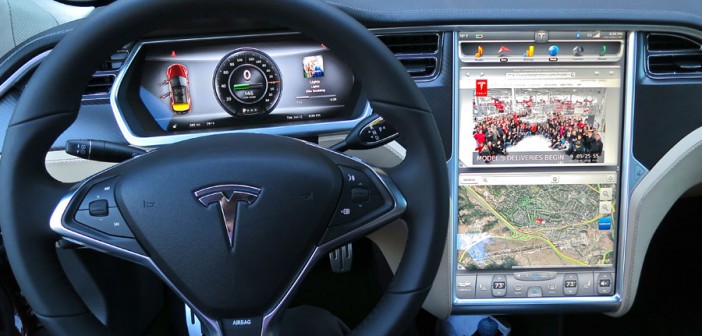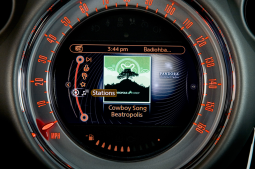In-Car Advertising Will Ascend to Match TV and Mobile in Time Spent
We’re hearing more and more about connected cars these days. They will be among the first internet of things activations to achieve true scale. Cars will be talking to other cars before most other types of IoT applications have meaningful impact on our lives. This connected “network” will ultimately be very powerful — possibly saving lives while also providing better traffic information and ultimately better driver experiences. But what does this all mean to marketers? And how can they plan for this eventuality and take advantage of it?
The connected car will present marketers with far-ranging opportunities. In the most obvious case, in-car advertising, now limited to radio and small-scale infotainment activations, will ascend to a medium on par with TV and mobile in terms of consumer’s time spent.
In a less-obvious case, connected cars will create an entirely new set of consumer data that will act as an enabling technology for marketers. Marketers have long craved data on real-world consumer behavior. The connected car will open insights on where consumers shop, travel and spend their time. As marketers better understand the connected car evolutionary path, they can make more informed decisions about how they leverage each discrete opportunity along the way. Here are four opportunities for marketers to explore with connected cars:
- Audio. Radio owns the car today, but with its one-way broadcast structure it will be supplanted over time. The first steps are being taken by Pandora now, as it begins developing a programmatic targeting network for in-car ads. Over time, as more and varied applications migrate to the car dashboard, this exchange will grow more robust, with more ad impressions becoming available and migrating into an “auto exchange” for buyers to act against, based upon all of the typical targeting data, in addition to location data and other information.
- Video. Visual ads are likely to be first inserted in the actual driving experience as drivers are given less and less to do in maneuvering their vehicle — and have more time to engage elsewhere. In the meantime, video will be a prime inventory format for pre- and post-drive and traffic-snarl periods. They require less-focused concentration, are entertaining and can deploy much more information.
For example, consider someone who gets into their car in the morning to drive to work. Starbucks has a new drink offer and may know that person has not been in-store for a couple of days. The video starts as the driver is getting ready to drive and provides an offer — and maybe even a direct “drive-to” for the location the consumer would normally choose (or, even better, press a key to order and have the coffee waiting upon pull-up). Video will be the most engaging way to get the consumer activated, and marketers will assuredly be able to reap the benefit. - Custom services marketing. For now, consumers use tools like Evernote to track a to-do list, Google Calendar to track time and Google Now to surface key actions based on email messages. All of that data will soon be converted into a data source for marketers to mine for targeting purposes. For example, a to-do list might include three specific shopping items; a marketer might use that data to deliver a targeted message showing they have all of those items in stock (i.e. at a nearby Walgreens) — and offer two of the items on a weekly special. This approach will be used by partners that can surf large quantities of data for “matches” to a marketer’s parameters, and in turn deliver a truly personalized targeted message.
- Highly personalized location-based targeting. This is the ad type many small businesses will want to figure out so they can make messages most engaging. If a consumer is at location X and has a history of visiting certain types of restaurants, a local restaurant could target the consumer with an ad — perhaps in the form of a location bookmark or an actual calendar event with a coupon. While it may not drive immediate action, it could bring the consumer in over time.
The real-world location data from connected cars represents a new pillar of marketing insight that will help marketers effectively understand consumers. Who owns the data, how it will be protected and how it will be used are still issues to be resolved, but the data itself represents a sea-change in the consumer knowledge that will be available to marketers.
The connected car, the first large-scale IoT platform, offers great promise to marketers — and a whole new way to reach consumers — at a time when they were previously reachable only on a very limited basis, such as with out-of-home or radio ads. Smart marketers will want to consider the potential new media consumption implications — and opportunities — for consumers and drive hard to get their messages in front of them accordingly. In a rapidly emerging space, first movers will have a serious advantage.




